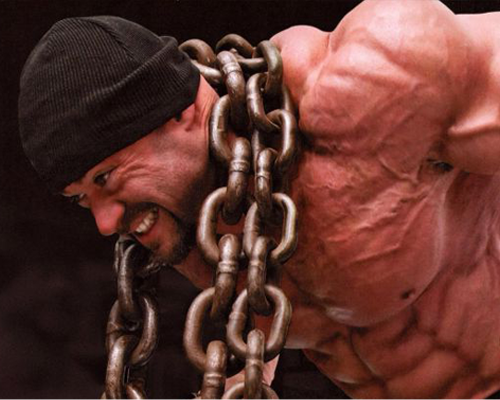As a beginner in bodybuilding, if asked what you trained today, you might answer: "My chest still hurts, so I'm going to exercise my legs." If that is still your general practice today that works for you, stick with it. We don't want to get in the way of your program. However, if you have problems planning your training week optimally, you have come to the right place. We explain to you which muscle groups can be trained together. Some arguments are based on purely personal experience, while others are strictly science-based. All of this serves to train each muscle group optimally in order to achieve maximum growth.
 ONE GOAL IS ENOUGH
ONE GOAL IS ENOUGH
If you pursue two goals at the same time, you will certainly not achieve either. This is how you should look at your training split. From now on you should no longer train aimlessly and without a fixed plan. So don't tryWorking on several muscle groups at the same time without really focusing on each individual muscle.
The exact planning of such a week is by no means easy. Today's success depends on yesterday and is crucial for tomorrow
Training environment. For example, how often have you trained the chest in front of the legs a day just so that you feel uncomfortable in the squat rack because the chest is tense? Such an insignificant factor hinders the further development of your legs because it alone distracts you mentally. When you're in the squat rack, think about nothing but your legs! Another classic example is exercising the back too soon after the biceps day. After a grueling biceps regimen, it can be hard to get your back working properly if your biceps haven't fully recovered and are still sore.
Let's take a step-by-step approach, set a few rules and plan your training split properly:

RULE NO 1
Train the smaller muscle groups separately, because the larger ones need the smaller muscles to perform at their best.
The compound exercises for the chest and shoulders require the support of the triceps. So it must have fully recovered. Working your arms on the first day of the training split, in our example on Monday, has several advantages.
Here you have 5 agonist-antagonist ratios between the biceps and triceps. And as science confirms, the second muscle group develops more strength during a workout. So if you are from
Starting week to week alternately with the biceps or triceps, both muscle groups benefit.
THE OPTIMAL TRAINING SPLIT FOR MORE MUSCLE MASS
- Tag 1: Biceps, Triceps
- Day 2: legs
- Day 3: break
- Day 4: chest, shoulders
- Day 5: back
- Day 6: break
- Day 7: break
RULE 2
Exercise the legs separately. When you put your legs together with
working on another muscle group, your lower body may not be exercising hard enough. The legs are such a large muscle group that they need a day of training. Since the arms are hardly challenged, they can recover sufficiently.
 RULE 3
RULE 3
Planning for strategic recovery days cannot be emphasized enough. Research confirms that the more relaxed the muscle, the stronger it is. According to our schedule, you trained your arms and legs. On the day, Wednesday, you can relax.
RULE 4
Three days have passed since the arm training. So your triceps should be able to support your chest and shoulders. People like to combine chest and deltas, as both are trained with pushing exercises and because the deltas are also inseparable from chest training. This Thursday you will also work the upper area of the trapezius, as it will be heavily involved in shoulder training.
RULE 5
Research confirms: If the back is worked on in the week before the other muscle groups, this is a hindrance for these muscles. If you train your back last, however, it is not only in the best possible starting position, but you also avoid putting other muscle groups at a disadvantage.
RULE 6
Saturday and Sunday are rest days.
FAZIT:
We have a four-day training split developed with three days of rest for each week. For this program to be effective, you need to train at the highest intensity. If not, you're wasting your time waiting to attack a muscle again.
We therefore recommend following this split program for four to six weeks and then training a few weeks less intensively.
You may be wondering if exercising one muscle group once a week is enough to achieve success.
Here, too, research confirms that if you want to build strength or muscle, it is optimal to work a muscle group once or twice a week. Because the muscles need enough time to recover and grow.
Exercising the muscles more than twice a week could be counterproductive to your training goals. If you were to train more often and at a higher rate per week, you would also have to reduce your intensity.
This split is an ideal starting position for the growth of each individual muscle group if it is performed at a high intensity. And because it is accompanied by sufficient recovery time, it is also productive.
So try it!
Train each muscle group with 16 to 20 work sets and with different repetitions and intensity techniques.

